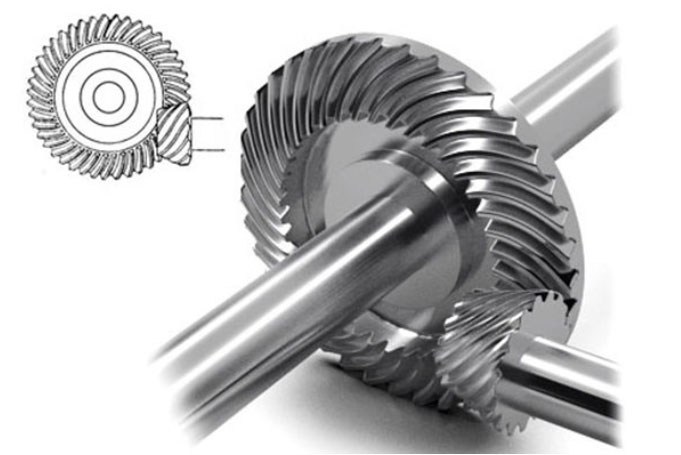Hypoid gears have indeed emerged as a game-changer in gearbox design, offering several advantages over traditional gear types. Here are some key ways in which hypoid gears are breaking the mold and revolutionizing gearbox design:

- Space Optimization: Hypoid gears have a unique offset design, which allows the pinion and the gear to be positioned at different axes. This offset arrangement enables a more compact gearbox design compared to parallel or intersecting shaft gearboxes. The ability to optimize space utilization is particularly beneficial in applications where size and weight constraints are important, such as automotive transmissions and industrial machinery.
- Higher Torque Transmission: Hypoid gears excel in transmitting high torque levels. The offset design and the spiral angle of the teeth result in more tooth engagement compared to other gear types. This increased tooth engagement enables the transmission of higher torque without sacrificing the size or weight of the gearbox. As a result, hypoid gears are well-suited for applications that require high torque output, such as heavy-duty machinery, construction equipment, and off-road vehicles.
- Improved Efficiency: Hypoid gears exhibit higher efficiency compared to some other gear types, such as worm gears. The offset design and the helical tooth profile reduce sliding friction and improve load distribution, resulting in lower energy losses and improved overall efficiency. The higher efficiency of hypoid gears translates into reduced power consumption, improved fuel economy (in automotive applications), and minimized heat generation.
- Versatility in Gear Ratios: Hypoid gears offer a wide range of gear ratios, allowing for greater flexibility in gearbox design. The offset configuration enables a larger gear ratio range compared to parallel shaft gears, making hypoid gears suitable for applications that require a wide range of speed variations or torque multiplication. The ability to achieve various gear ratios within a single gearbox simplifies system design and allows for optimized performance across different operating conditions.
- Noise Reduction: Hypoid gears, with their helical tooth profile and offset design, exhibit lower noise levels compared to certain gear types, such as straight-cut spur gears. The gradual engagement of helical teeth and the sliding action between the gear teeth help reduce noise and vibration during gear meshing. This noise reduction is particularly important in applications that require quiet operation, such as automotive transmissions, household appliances, and precision machinery.
- Enhanced Durability: Hypoid gears are known for their durability and resistance to wear. The larger contact area and the distributed load-bearing capabilities result in reduced contact stress and improved gear life. Additionally, the sliding action between the gear teeth helps distribute lubrication more effectively, reducing wear and extending the lifespan of the gears. The enhanced durability of hypoid gears makes them well-suited for demanding applications that require long-lasting and reliable gearboxes.
- Application-Specific Optimization: Hypoid gears can be optimized and tailored for specific applications to maximize their performance. Factors such as tooth geometry, materials, lubrication, and heat treatment can be carefully selected and engineered to meet the specific requirements of the gearbox. This application-specific optimization allows designers to achieve the desired balance between performance, efficiency, durability, and other key considerations.
Hypoid gears have found widespread use in various industries, including automotive, aerospace, heavy machinery, and robotics. Their unique design and performance characteristics make them a preferred choice in applications that demand high torque, compact size, efficient power transmission, and reduced noise. As gearbox design continues to evolve, hypoid gears are expected to play an increasingly important role in meeting the ever-growing demands of modern machinery and equipment.
